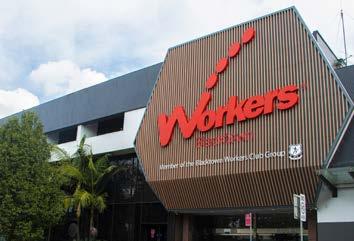
3 minute read
Business
ISSUE 18 | September 2022
Business WORKER BURNOUT HITS HARD Nearly half are suffering
DALLAS SHERRINGHAM
FISRT the bad news: worker burnout has hit in plague proportions in Parramatta and Western Sydney, but the good news is there is a solution.
And it’s not just restricted to our region. Across Australia, burnout has a significant economic impact with stress-related work absences and presenteeism estimated to cost Australia $14.81B per year. A recent survey indicated that nearly half of all Australians suffer from burnout out, as workers start to feel less secure about the economy.
The number of employees suffering from burnout during the first quarter of 2022 was over 10% higher than the 34% reported in the same quarter last year, according to the report.
Renee Thornton, General Manager of leading corporate health provider Rehab Management, said these statistics were not surprising. “Unfortunately, we are living in increasingly turbulent times. In addition to navigating a worldwide pandemic over the past few years, employee stress has been heightened by factors such as rising inflation, the cost-of-living crisis and the impact of staff shortages,” Ms Thornton said.
“Although most organisations are aware of the importance of mental health, the majority are overlooking the employee burnout crisis.”
Renee Thornton,Renee Thornton.
“Given that we spend a third of our lives working, our jobs have an enormous impact on our wellbeing,” Ms Thornton said.
“Burnout workers are not productive and poor mental health has a detrimental impact on the workforce and the wider business. Keeping customers happy is the key to building a successful business, but this will only become harder if employees are burnt out.”
Employee burnout is being further impacted by the latest wave of COVID-19. It is estimated that anywhere from 10% to 30% of patients might experience long COVID for weeks, months and even years after recovering—even if they weren’t very sick in the first place - affecting their ability to work or cause them to take time off sick.
Employers also need to be aware of the ‘great resignation’. Around 44% of workers say they are planning to actively look for a new job this year and only 34% of employees believe they'll stay with their current company for up to 18 months.
“It is certainly a challenging time for employers but it’s clear that it’s time to take employee wellbeing seriously. However, caring about employees needs to be about more than just platitudes,” Ms Thornton said.
“Employers have a duty of care towards their employees, which extends to both their physical and mental health.”
Top tips for preventing and managing employee burnout according to Renee Thornton: 1. Systematically check in with your workforce. 2. Support employees and managers to manage wellbeing. 3. Engage a corporate health consultant.
If this is not your company’s area of expertise, reach out to an expert in the field to ensure you are ticking all the right boxes. While it is impossible to know it all, there is help available. She said Rehab Management worked with small and large organisations to offer tailored and appropriate health and wellbeing services.
“We listen to our clients and tailor services and solutions to suit their needs, and our highly skilled senior staff can deliver workshops and training right up to the CEO level.” “That includes everything from reducing physical hazards in the workplace, to how to offer flexible working conditions, enabling more autonomy for individual workers, or building friendly and collaborative working relationships between colleagues.”

For more information on accessing Rehab Management’s tools and corporate health support visit: www.rehabmanagement.com.au
WEXPO coming soon to Blacktown Workers Club









